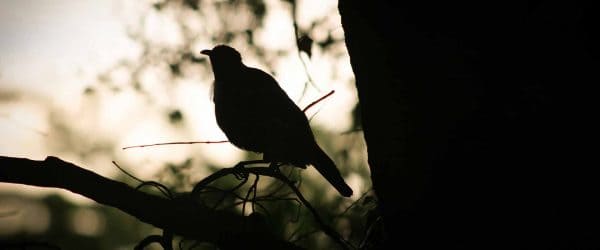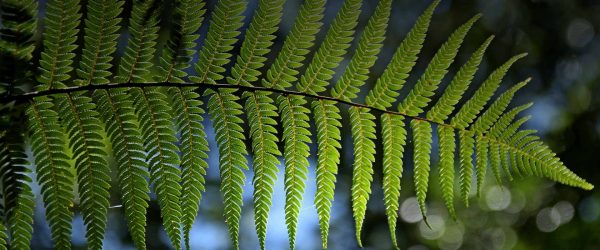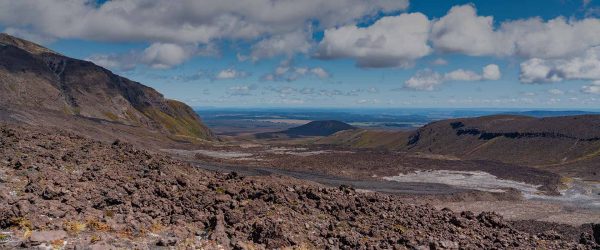Vision
Māori knowledges and planning are informing and improving resilience across a range of natural hazards.
Project description
Māori have obligations to protect the material resources and communities within their tribal regions. Responsibility is undertaken for the wellbeing of others during adversity which enacts the cultural principle of kaitiakitanga (protection, guardianship and leadership).
Thus, Māori knowledge of their local environment, communities and the natural hazards they face can inform planning to build resilience for both tangata whenua, and for wider Aotearoa New Zealand.
The following research projects explore how mātauranga Māori can inform planning at the hapū, iwi and multiple-iwi levels, how this knowledge can be better integrated into the wider planning system, and how it can be harnessed to improve disaster resilience for whānau, hapū and iwi.
- Whaowhia te Kete Mātauranga: Embedding Mātauranga Māori in Hapū Resilience Plans
Suzanne Phibbs
This co-creation project involves the Ngāti Raukawa Northern Marae Collective in an indigenous citizen science research process. The outputs will be draft hapū resilience plans, and the publication of a journal article and conference paper, co-developed with the community.
- Exploring ways Mātauranga Māori can inform joint iwi resilience planning
Christine Kenney
This project is exploring ways mātauranga Māori can inform resilience planning across multiple iwi. Key milestones include the organisation of a hui-a-wānanga on mātauranga Māori relating to disaster resilience planning, the creation of a culturally-informed resilience plan, and a journal article and conference presentation.
- Assessing the implications of Resource Management Act reforms on resilience for Māori communities
Lara Taylor
This project carries on from research into iwi/hapū management plans (IHMP) by Dr Wendy Saunders and Lucy Kaiser in Phase 1 of the Resilience Challenge. Researchers are undertaking an assessment and analysis of the 2020 RMA reform report for implications on resilience for Māori communities, resulting in a paper or report. They will also test RMA reform findings against resilience indicators for Māori. Findings will be presented at a conference and a journal article submitted.
Wawata
E whakamōhio, e whakapai ana hoki ngā mātauranga me ngā whakamahere Māori i te manawaroa puta noa i ētahi mōrearea taiao.
Whakaahuatanga papatono
He takohanga ō te Māori ki te tiaki i ngā rawa me ngā hapori i roto i ō rātou ake rohe. Ka whāia te haepapa mō te oranga o ētahi atu i ngā wā o te raru, otirā ka whakatinanatia te mātāpono ahurea o te kaitiakitanga.
Nō reira ka whakamōhio te Mātauranga Māori o ō rātou ake taiao, hapori me ngā mōrearea taiao i te whakamaheretanga ki te whakatipu i te manawaroa mō ngā tāngata whenua, ā, tatū noa ki Aotearoa whānui.
Ko ngā kaupapa rangahau e whai ake nei ka tūhura i te āhua o te mātauranga Māori ki te whakamōhio i ngā mahi whakamahere i ngā taumata o te hapū, te iwi, me ngā iwi maha hoki, ka pēhea hoki te pāhekoheko pai ake i tēnei mātauranga ki roto i te whānuitanga o te pūnaha whakamahere, ā, me pēhea hoki te whakamahi i tēnei hei whakapai ake i te manawaroa aituā mō ngā whānau, ngā hapū me ngā iwi.
- Whaowhia te Kete Mātauranga: Embedding Mātauranga Māori in Hapū Resilience Plans
Suzanne Phibbs
Ka uru ki tēnei kaupapa hanga-ngātahi te Ngāti Raukawa Northern Marae Collective mā tētahi tukanga rangahau pūtaiao kirirarau iwi taketake. Ko ngā putanga ko ngā mahere manawaroa hukihuki a ngā hapū, me te tānga o tētahi atikara pitopito kōrero me tētahi pepa wānanga, i hangaia ngātahitia me te hapori.
- Exploring ways Mātauranga Māori can inform joint iwi resilience planning | Te tūhura i ngā tikanga e whakamōhio ai te Mātauranga Māori i te whakamahere manawaroa a ngā iwi e mahitahi ana
Christine Kenney
E tūhura ana tēnei kaupapa i ngā haurahi e taea ai e te mātauranga Māori te whakamōhio i ngā mahi whakamahere manawaroa puta noa i ētahi iwi maha. Ko ētahi o ngā tūtohu matua ko te whakarite i tētahi hui ā-wānanga o te mātauranga Māori e pā ana ki te whakamehere manawaroa aituā, te hanga i tētahi mahere manawaroa i whai mōhio ā-ahurea, tētahi atikara pitopito kōrero me tētahi whakaaturanga wānanga.
- Assessing the implications of Resource Management Act reforms on resilience for Māori communities | Te aromatawai i ngā hua o ngā whakahoutanga o te Resource Management Act ki te manawaroa o ngā hapori Māori
Lara Taylor
Ka whai haere tēnei hōtaka i ngā rangahau ki ngā mahere whakahaere ā-iwi/hapū nā Dr Wendy Saunders rāua ko Lucy Kaiser i te Wāhanga 1 o Kia manawaroa – Ngā Ākina o Te Ao Tūroa. E mahi ana ngā kairangahau i tētahi aromatawai me tētahi arotake o te pūrongo whakahou i te RMA 2020, me ōna pānga i runga i te manawaroa o ngā hapori Māori, ā, ko te hua ko tētahi tuhinga, pūrongo rānei. Ka whakamātauria hoki e rātou ngā kitenga whakahou i te RMA, ka whakatauritea ki ngā tohu manawaroa i runga i te Māori. Ka whakaaturia ngā kitenga i tētahi wānanga, ā, ka tukuna hoki tētahi atikara pitopito kōrero.
Resource Outputs from this project
Indigeneity and emergency management: an emic “gaze” on the role of traditional knowledges and cultural practices in emergency management contexts
An analysis of indigenous emergency management knowledges and practices noted in disaster research literature between January 2000 and July 2022.
Looking backwards to move forwards: insights for climate change adaptation from historical Māori relocation due to natural hazards in Aotearoa New Zealand
Providing insights from the past to help plan for future adaptation.
E Oho! Awakening Te Ao te Aroā Mobilising for Action at Ohaki Pā
Te Ao Te Aroā (or the world according to Aotearoa New Zealand) is imagining the world awakened, and changing trajectory, toward regeneration and hope.
Papa Pounamu submission on the draft National Adaptation Plan
Papa Pounamu submission to the Ministry for the Environment on the draft National Adaptation Plan, June 2022
Joint submission: Natural and Built Environments Bill Exposure Draft
Papa Pounamu and the Aotearoa Pacific Practitioners Group are Special Interest Groups of the New Zealand Planning Institute. This is their joint July 2021 submission on the Exposure Draft of the Natural and Built Environments Bill.
Papa Pounamu submission: RMA reform discussion document
Papa Pounamu submission on the RMA reform discussion document 'Transforming Aotearoa New Zealand’s resource management system: Our future resource management system'
Embodying Kaitiakitanga
A collective of Māori planners, researchers, practitioners and kaitiaki came together in a series of online wānanga in 2022 to discuss the issues that have arisen for te taiao and communities as the result of a colonised resource governance and management system. Lead author kairangahau Māori Lara Taylor (E Oho!) has compiled the collective’s thoughts, experiences, and insights in this booklet.
He Ekenga Ngaru – Māori community solutions to climate retreat and adaptation
Developing a community response to the Parliamentary inquiry into climate adaptation.
He Ekenga Ngaru – Māori community solutions to climate retreat and adaptation
Submission to the Environment Select Committee on the Inquiry into Climate Adaptation, November 2023. Submitted by E Oho! Awakening Aotearoa (on behalf of multiple voices…
He kai kei aku ringa – Disaster preparedness
How can whānau and communities determine for themselves how best to prepare, respond and recover?
Indigenous Responses to Natural Hazard Events
Drawing upon case studies from Aotearoa and Fiji, the authors outline how indigenous disaster risk reduction knowledge and practices can complement Western scientific knowledge.
A risk-based approach to land use: planning for natural hazards.
Saunders WSA. 2017. A risk-based approach to land use: planning for natural hazards. Planning Quarterly. 205:28-33.
Investigating the role of iwi management plans in natural hazard management: a case study from the Bay of Plenty region.
Saunders WSA. 2018. Investigating the role of iwi management plans in natural hazards management: a case study from the Bay of Plenty region. Lower Hutt…
Synergising public health concepts with the Sendai Framework for Disaster Risk Reduction: A conceptual glossary.
Phibbs S, Kenney C, Severinsen C, Mitchell J, Hughes R. 2016. Synergising public health concepts with the Sendai Framework for Disaster Risk Reduction: a conceptual…
Heartaches over Housing: correlating cardiovascular disease rates and housing damage in the aftermath of the Canterbury earthquakes.
Phibbs S, Kenney C. 2017. Heartaches over housing: correlating cardiovascular disease rates and housing damage in the aftermath of the Canterbury earthquakes. The Lancet Planetary…
The planning nexus between disaster risk reduction and climate change adaptation.
Lawrence J, Saunders W. 2017. The planning nexus between disaster risk reduction and climate change adaptation. In: Kelman I, Mercer J, Gaillard J, editors. The…
Science to practice: understanding how natural hazard and climate science can be incorporated into land use plans.
Kilvington M, Saunders W. 2017. Science to practice: understanding how nature hazard and climate science can be incorporated into land use plans. Planning Quarterly. 205:8-12.
Indigenous Communities and Climate Change: Situating culture, identity and place in climate change risk mitigation and resilience
Kenney C, Phibbs S. 2020. Indigenous peoples and climate change: situating culture, identity, and place in climate change risk mitigation and resilience. In: Leal Filho…
Envisioning collaborative governance within indigenous disaster management settings in Aotearoa New Zealand.
Kenney, C. 2018. Envisioning collaborative governance within indigenous disaster management settings in Aotearoa, New Zealand. Colchester (GB): University of Essex, Centre for Environment and Society
Na Ara Ahurea: Envisioning Collaborative Governance in Disaster Risk Reduction in Aotearoa
Kenney C. 2018. Na Ara Ahurea: envisioning collaborative governance in disaster risk reduction in Aotearoa [abstract]. In. Risk, resilience and reconstruction: science and governance for…





